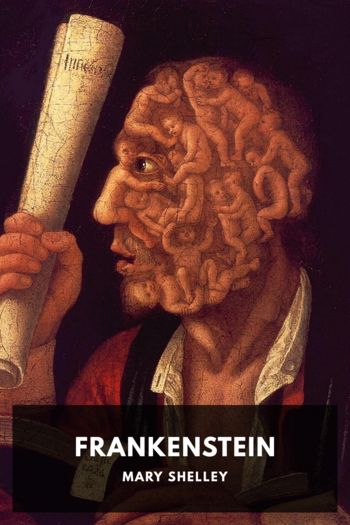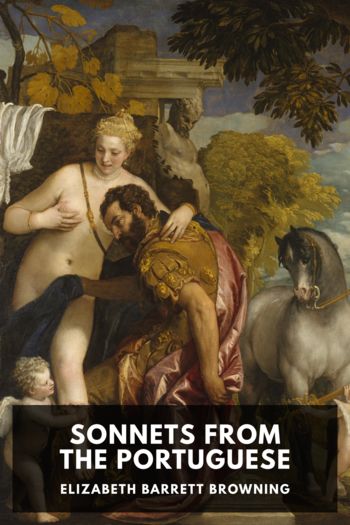Two-Way Mirror, Fiona Sampson [children's ebooks online .txt] 📗

- Author: Fiona Sampson
Book online «Two-Way Mirror, Fiona Sampson [children's ebooks online .txt] 📗». Author Fiona Sampson
Just how narrowly Elizabeth understands even men she thinks she knows will be brought home the following June when Benjamin Haydon, desperate for money and exhausted by the struggle to sustain his artistic reputation, commits suicide. The old friends have fallen out of regular touch since her romance with Robert began, but Haydon will send her three notes just the week before he dies; to which, absorbed by her new life, she’ll pay scant attention. His death will fill her with regret: ‘I have been told again & again […] that to give money there, was to drop it into a hole of the ground. But if to have dropped it so, dust to dust, would have saved a living man—’
In general though, thinking through the consequences for others is Elizabeth’s modus vivendi. When she finally abandons the Pisa plan in October 1845, it’s partly because it risked having her father disown Arabel and George, who, like all the siblings except herself, are his financial dependents, ‘Constrained bodily into submission .. apparent submission at least .. by that worst & most dishonoring of necessities, the necessity of living .. everyone of them all, except myself, being dependent in money-matters on the inflexible will.’ Finally she acknowledges that ‘The bitterest fact of all is, that I had believed Papa to have loved me more than he obviously does,’ and tells Robert, ‘I am—your own.’ The long transition from daughter to partner and peer is complete.
Luckily for Papa’s bluff – luckily for literature – the winter of 1845–46 turns out to be so exceptionally mild that still, two decades into the over-heating twenty-first century, it’s one of the dozen mildest since records began. Elizabeth survives it with ease. Indeed, she continues to get stronger. It helps that the summer which follows is also exceptionally warm. In July 1845 she was beginning to enjoy carriage rides to Regent’s Park; in May 1846 she takes her first stroll there:
Arabel & Flush & I were in the carriage—& the sun was shining with that green light through the trees […] .. & I wished so much to walk through a half open gate along a shaded path, that we stopped the carriage & got out & walked, & I put both my feet on the grass, .. which was the strangest feeling! .. […] Dearest, we shall walk together under the trees some day!
The intensity of this desire comes so recognisably from her country childhood that it’s like a flashback to the flickering heat and green of a Hope End summer. Returning health, the love affair, and ‘sun […] shining with that green light through the trees’ all belong to a psychical hinterland that she tells Robert is ‘That Dreamland which is your especial dominion’, where every element strengthens the others: ‘How strong you make me, you who make me happy!’
By the next month she’s even well enough to go visiting. It’s like stepping back into life. In June alone she visits Mary Trepsack, John Kenyon and Hugh Stuart Boyd, the last of whom she hasn’t seen for seven years. Kenyon takes her to see the Great Western Railway’s new steam engine in action; she delights in the unfamiliar ‘rush of the people & the earth-thunder of the engine’. She goes driving with the distinguished art historian Anna Jameson, a new friend who is also a friend of Robert’s. Together they visit one of the great private art collections of London, belonging to Samuel Rogers, where Elizabeth sees a first edition of Paradise Lost, Michelangelo and Raphael cartoons, Rubens, Titian, Tintoretto and a late Rembrandt self-portrait, ‘which if his landscapes, as they say, were “dug out of nature”, looks as if it were dug out of humanity.’ After years within the four walls of her own room, seeing these old masters first hand and close up is giddy-making, and Elizabeth has an artistically overwhelmed moment of Stendhal syndrome: ‘Almost I could have run my head against the wall, I felt, with bewilderment.’
Something else is adding to the freshness of these experiences. In October 1845 she was still ‘taking forty drops of laudanum a day’ for her ‘absolutely shattered’ ‘nervous system’. But by February 1846, ‘And that you should care so much about the opium—! Then I must care, & get to do with less .. at least—[…] But slowly & gradually something may be done—’ For as she becomes stronger, so does Robert. He steps up to the plate, asking her to give up her opiate habit, urging marriage, and announcing that he will support them both and she can settle all her inheritance on her siblings. Elizabeth sensibly pooh-poohs this last impracticality – ‘I shall refuse steadily […] to put away from me God’s gifts .. given perhaps in order to this very end’ – while stepping up in turn. She cuts down the morphine, and tries gently to concentrate her lover’s mind on how he could actually earn in Italy. A contract to write for a periodical would be good; or could they house-sit for one of his aristocratic friends? She also points out that her inheritance is useful but not limitless: ‘Nearly two hundred a year of ship shares I never touch—Then there is the interest of six thousand pounds (not less at any rate) in the funds—& I referred to the principal of that, when I said yesterday, that when we had ceased to need it, it might return to my family […] if you chose.’
Perhaps every elopement needs a rehearsal. This





Comments (0)